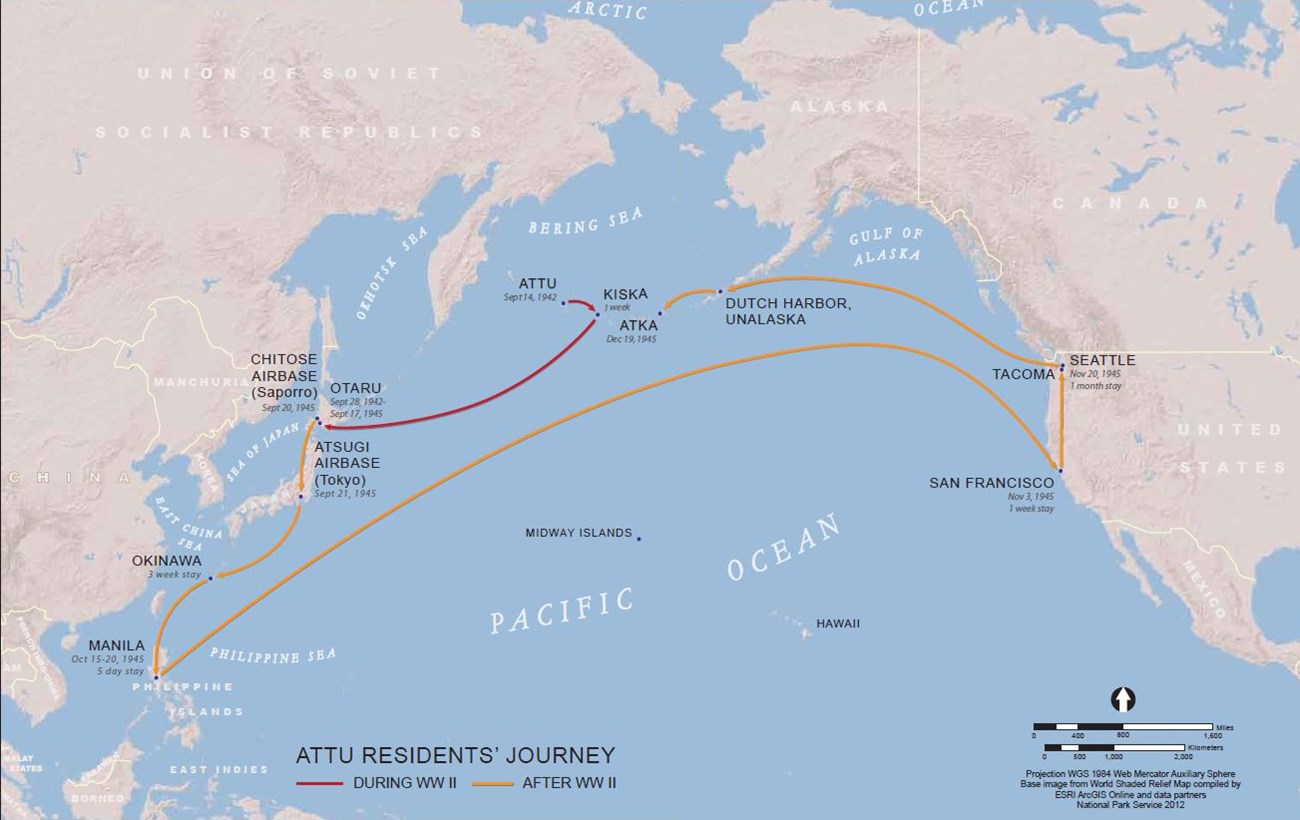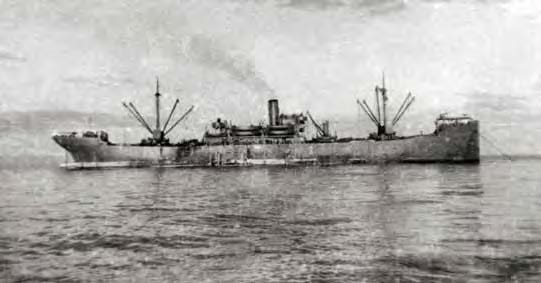Article
World War II Aleut Relocation Camps in Southeast Alaska - Introduction

Alaska at War
On December 7, 1941, airplanes from Japanese Imperial Navy aircraft carriers attacked the U.S. Pacific Fleet at Pearl Harbor, Hawaii, forcing the nation into a war that would last almost four years and affect Alaska deeply. Alaska was still a territory administered by a federal governor, and its sparse population and vast spaces created challenges for military planners. Though Navy submarine and seaplane bases had been authorized at Sitka, Kodiak, and Unalaska in 1939 (Morison 1982:3034), Alaska was poorly prepared to defend itself against Japanese attack.
On June 3 and 4, 1942, Japanese fighter planes and bombers attacked the U.S. Naval base at Dutch Harbor, on Unalaska Island in Alaska’s Aleutian Island chain (Cloe 1991:109-135; Thompson 1987:29). The engagement coincided with an epic and decisive four-day naval air battle between U.S. and Japanese carrier-based planes near the U.S. naval base at Midway Island that resulted in the sinking of all four Japanese aircraft carriers and one U.S. aircraft carrier (Cloe 1991:140-143). Japanese Navy and Army troops on June 7 and 8 invaded the far Aleutian islands of Kiska – where the personnel of a U.S. Navy weather station were captured (Rearden 1986:18-20; Takahashi 1995:37), and Attu – whose Native villagers were detained and eventually sent to Japan for the remainder of the war (Figure 1). The seaplane tender Casco arrived at the Aleutian island of Atka on June 10 to service PBYs – the Navy’s primary amphibious aircraft – assigned to strafe and bomb the growing Japanese positions (Cloe 1991:159). When a Japanese observation plane found the source of their torment, enemy planes bombed and strafed the hastily evacuated Native village at Atka (Oliver 1988:xvii-xviii), cratering the hillside (Mobley 2006:29-30). In one week Alaska was plunged into war.
Evacuation
The U.S. military knew that confronting the enemy in the Aleutians would risk civilian – particularly Native – lives, but the responsibilities for civil authority were not clear. Civilian evacuation had been discussed among various agencies for months (Kirtland and Coffin 1981:9-12). Villagers on St. Paul and St. George Islands in the Pribilof Islands were clearly the responsibility of the U.S. Fish and Wildlife Service (USFWS) as they had been for decades; the superintendents for the federal government’s exclusive franchise to harvest pelts from the northern fur seals that birthed their pups on the islands’ beaches wielded a very strong hand in the lives of the Pribilof Islanders – including whether they and their families were allowed to stay on the islands. Federal exposure to other Aleut villages was largely through the territorial school system – hardly the authority to demand that villagers leave their homes. By May of 1942, however, military opinion publicly favored the idea that civilians were to be evacuated if the Japanese threatened Alaska.

Alaska State Library Evan Hill collection PCA343-468
Ultimately the decision to evacuate Aleut villages was forced amid chaotic circumstances. By June 12 of 1942 the enemy had twice attacked U.S. bases at Dutch Harbor by air, they were building naval and air bases on Kiska and Attu Islands in the Aleutian chain, they’d captured a U.S. Navy weather station team at Kiska and detained the villagers of Attu, and they’d just menaced the Native village of Atka. The Navy seaplane tenders USS Gillis and USS Hulbert were in Nazan Bay off Atka on the evening of June 12 when they received orders issued by Commanding General Simon B. Buckner to remove the villagers and burn the village. The U.S. military viewed the buildings as a potential asset to the enemy’s advance. The orders were carried out almost immediately, while villagers were mostly scattered at distant fish camps for safety from Japanese air attack, so that when the Natives reassembled they had almost no personal possessions (Kirtland and Coffin 1981:12-13). They were shortly removed to the village of Nikolski by the U.S. Army Transport (USAT) Delarof (Figure 2).
